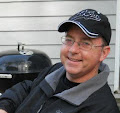I opened the shell on my SW-1 PRR 9238 and examined the tiny wiring very carefully. Yup, it was backwards. I carefully pulled it off, flipped it 180 degrees and plugged it back together. Placed it on the track and it ran the direction I wanted it ... but no light, no matter what I did. I reprogrammed the decoder, reset it to the factory defaults, checked all the wiring, nada. Spent about 2 hours and no headlight. Must have burned out the bulb.
Next time, try the software suggestion first, even if it's a hardware problem!
On the plus side, since I was fixing DCC issues, I took my old Athearn SW1500 that I have had for about 30 years, off the shelf. I am pretty sure this ran on my 3'x6' under bed layout when I lived at my parents house and survived the shelf layout in the apartment (definitely have a photo of that) and the 4' x 8' in the basement of the first house Lisa and I bought. I had started to convert this to DCC but could never get it to work. I fixed some of the wiring based on what I found on the S-1, cleaned it up and put it on the track. I set just a couple CV parameters using JMRI (this program is really cool!), cranked the throttle - bam! It took off and was whizzing down the track. It ran surprisingly well but sounds like a 55 gal barrel rolling down a hill with steel ball bearings inside. I may have to keep this on in reserve on the engine track.
Next I need to paint those white mile posts to help Eric with the switch aligned. A few adjustments and maybe I can get Eric and Jack back over here for another operating session.

